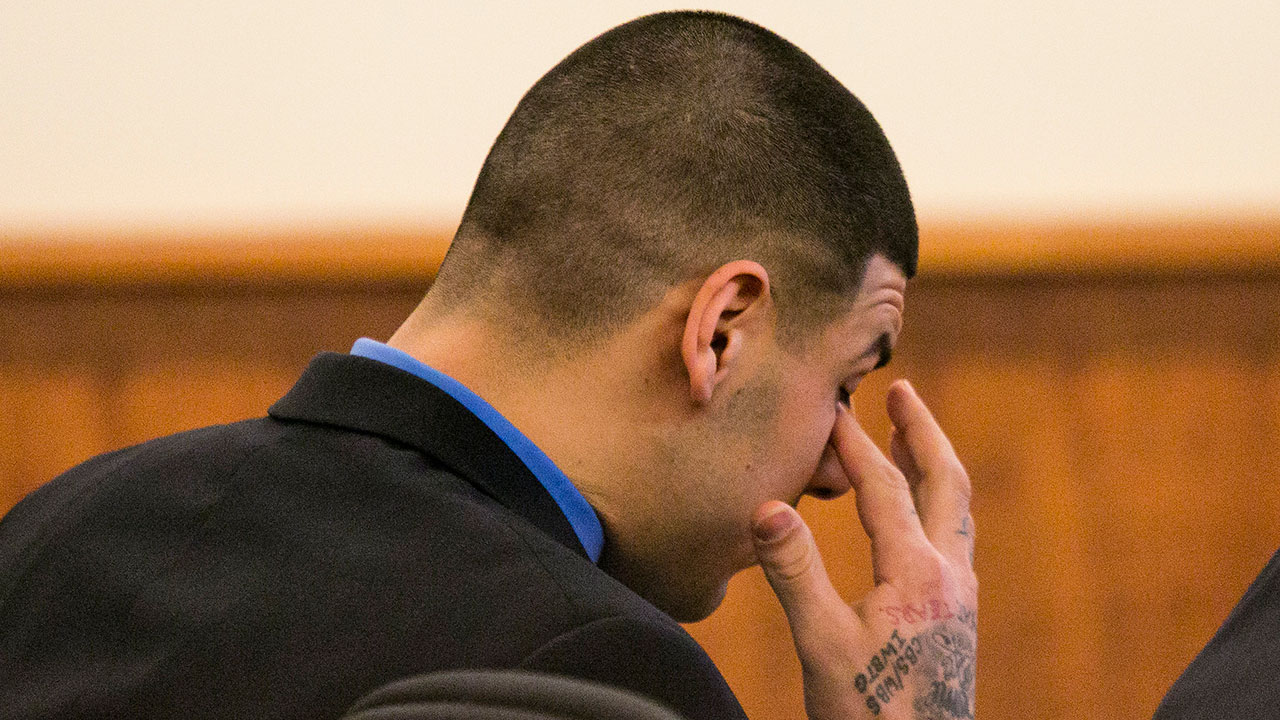FALL RIVER, Mass. — Testimony in the murder trial of former New England Patriots player Aaron Hernandez ended Monday after the defence called just three witnesses and rested its case in a single day.
Superior Court Judge Susan Garsh told jurors they had heard all the evidence they would hear, and that they were due in court Tuesday morning to hear closing arguments and receive instructions. They will then begin deliberations.
Hernandez has pleaded not guilty in the June 17, 2013, killing of Odin Lloyd, who was shot six times at an industrial park less than a mile from Hernandez’s home in North Attleborough. Lloyd was dating the sister of Hernandez’s fiancee. At the time of the killing, the star tight end had a $40 million contract with the Patriots.
The defence’s first witness was a professor at Tufts University School of Medicine, who testified about the effects of the drug PCP, saying it can cause people to become suddenly violent days after using it. Hernandez’s cousin testified that she saw his two co-defendants, Ernest Wallace and Carlos Ortiz, smoking PCP the weekend of the crime. Both men have pleaded not guilty and will be tried later.
Prosecutor Patrick Bomberg went after Dr. David Greenblatt’s testimony, showing surveillance video of Ortiz, Wallace and Hernandez from Hernandez’s home before and immediately after the killing. In the videos, the men do not appear to be acting strangely.
"This is essentially three minutes after the murder; you’d expect to see something lingering of PCP psychosis or intoxication," Bomberg said, asking if Greenblatt could detect such behaviour.
"You just can’t tell," Greenblatt replied.
After the defence rested, prosecutors called a rebuttal witness to testify about PCP. That witness, Dr. Martin Brecher, a psychiatrist who wrote a paper reviewing cases of PCP over decades, said it was wrong to associate the drug and violence.
The other two witnesses called by the defence related to DNA on a shell casing found inside a silver Nissan Altima that was rented by Hernandez, which prosecutors say he used to drive Lloyd to his death. When police found the shell casing in a trash bin at a rental car agency, it was stuck to chewed blue bubble gum that also was found in the Nissan. In testing, Hernandez’s DNA was found on the shell casing. The defence has argued it got there from the bubble gum. A DNA analyst testified Monday that Hernandez’s DNA was on the bubble gum.
While they spent less than a day putting on a defence, Hernandez’s lawyers vigorously cross-examined many of the prosecution’s 132 witnesses, some for hours, during the more than 2-month-long trial. They questioned why Hernandez would put his life and career on the line to kill a man they said was a friend. They also attacked what they painted as sloppy police work.
Prosecutors have not explained to jurors a possible motive for the killing. They had no witnesses to the shooting and never found the murder weapon. But they presented hundreds of pieces of evidence, including surveillance videos from inside Hernandez’s home that showed him holding a black object that appeared to be a gun less than 10 minutes after Lloyd’s killing. A joint found near Lloyd’s body had DNA from both men on it.
Cellphone records also showed the men communicating with Lloyd that night. Surveillance video along the way showed Hernandez driving the Nissan shortly before Lloyd’s sister saw him get into a silver car, a moment captured on a neighbour’s security camera. Soon after, a toll booth camera caught the Nissan leaving Boston, while Lloyd’s phone pinged several cell towers before stopping in North Attleborough for good.
After closing arguments, the 15 jurors will be given instructions, then three of those will be randomly selected as alternate jurors.
Eighteen jurors began the trial in January, but three were dismissed, including one who is accused of misrepresenting her answers during screening in a bid to get onto the jury.









